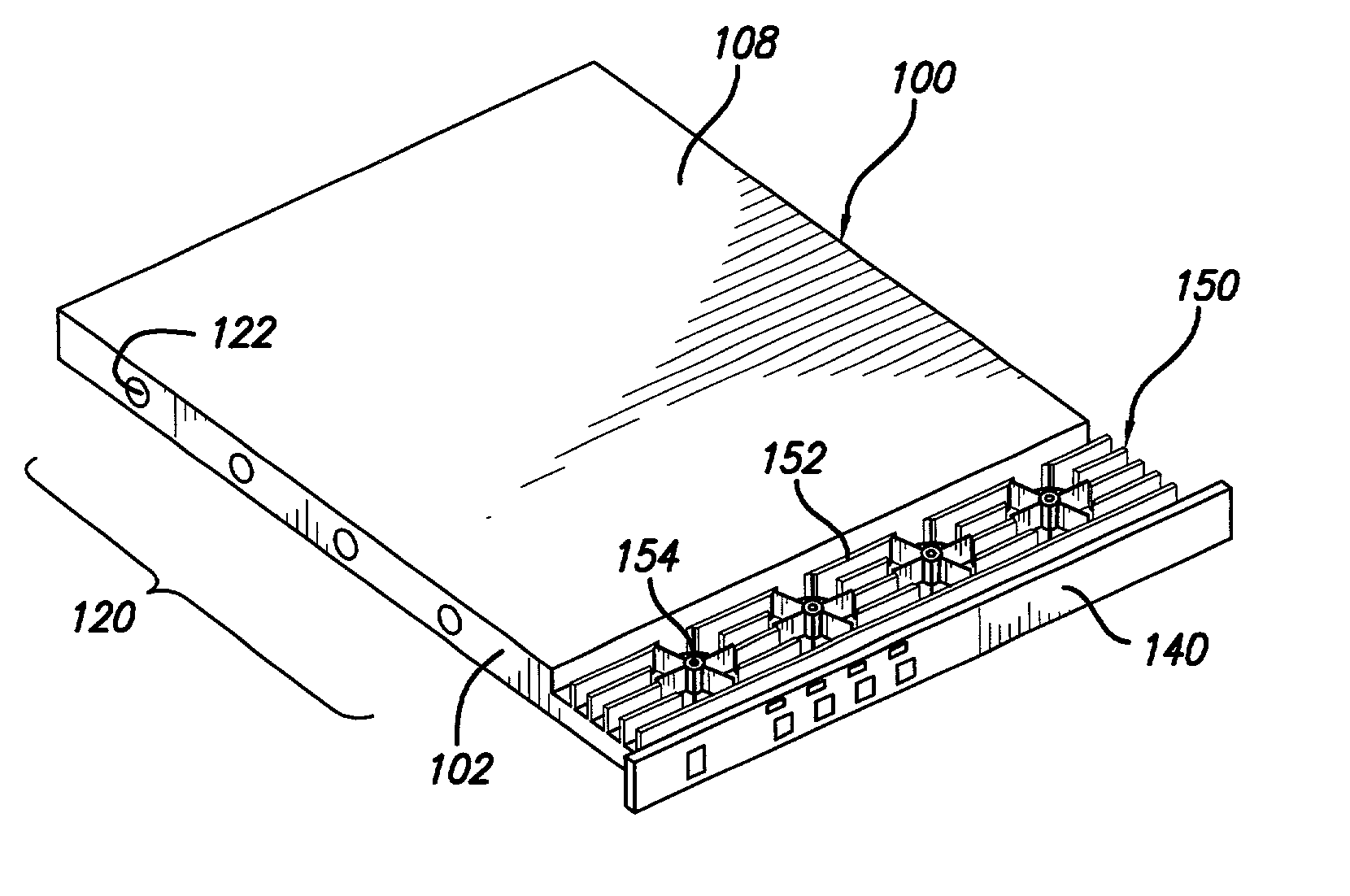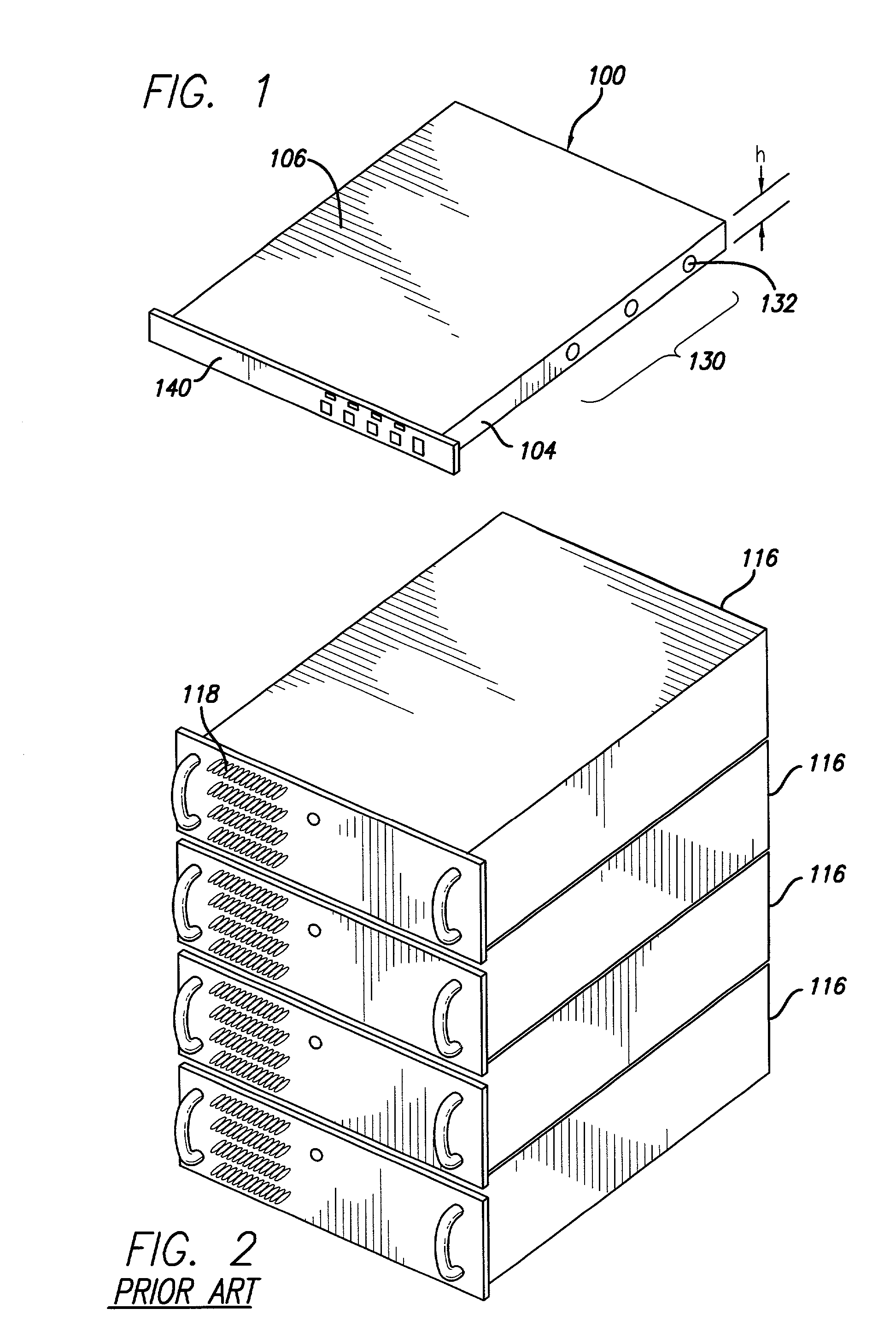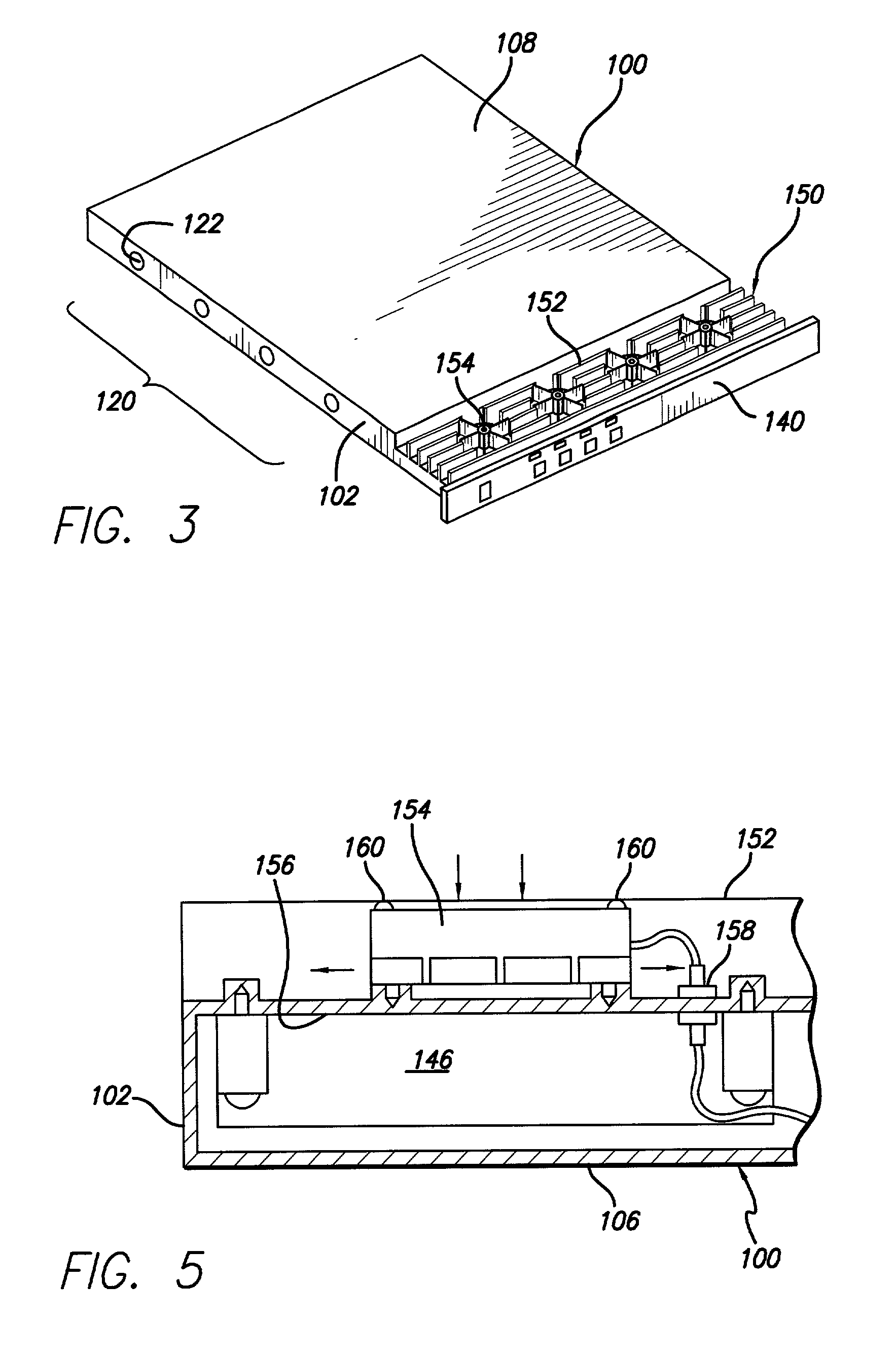Cooling system and method for a high density electronics enclosure
- Summary
- Abstract
- Description
- Claims
- Application Information
AI Technical Summary
Benefits of technology
Problems solved by technology
Method used
Image
Examples
example two
[0056] An aluminum 1U enclosure was equipped with nine intake fans and four exhaust fans in opposing side panels. Each of the fans measured 40 mm square by 10 mm thick, at the fan casing, and had a maximum flow capacity of 11.3 CFM. A single server, comprising a 1 GHz Athlon.TM. processor from AMD.TM., 1 GB of ECC memory, a 30 GB 5200 rpm hard drive, and associated components, was installed in the enclosure. The fans and the internal components were powered on, with the fans operated at full speed. The imbalance in the fan arrays created a positive pressure inside the enclosure. The ambient temperature was set and controlled using a climate control system. The intake (ambient) temperature ("T.sub.1") and internal air temperature at between 0.5 and 1.0 inch away from the CPU ("T.sub.2"), were measured at steady state, for various different ambient temperatures. Results are reported in Table 1, with .DELTA.T equal to the difference between T.sub.1 and T.sub.2.
[0057] The same server co...
PUM
 Login to View More
Login to View More Abstract
Description
Claims
Application Information
 Login to View More
Login to View More - R&D
- Intellectual Property
- Life Sciences
- Materials
- Tech Scout
- Unparalleled Data Quality
- Higher Quality Content
- 60% Fewer Hallucinations
Browse by: Latest US Patents, China's latest patents, Technical Efficacy Thesaurus, Application Domain, Technology Topic, Popular Technical Reports.
© 2025 PatSnap. All rights reserved.Legal|Privacy policy|Modern Slavery Act Transparency Statement|Sitemap|About US| Contact US: help@patsnap.com



